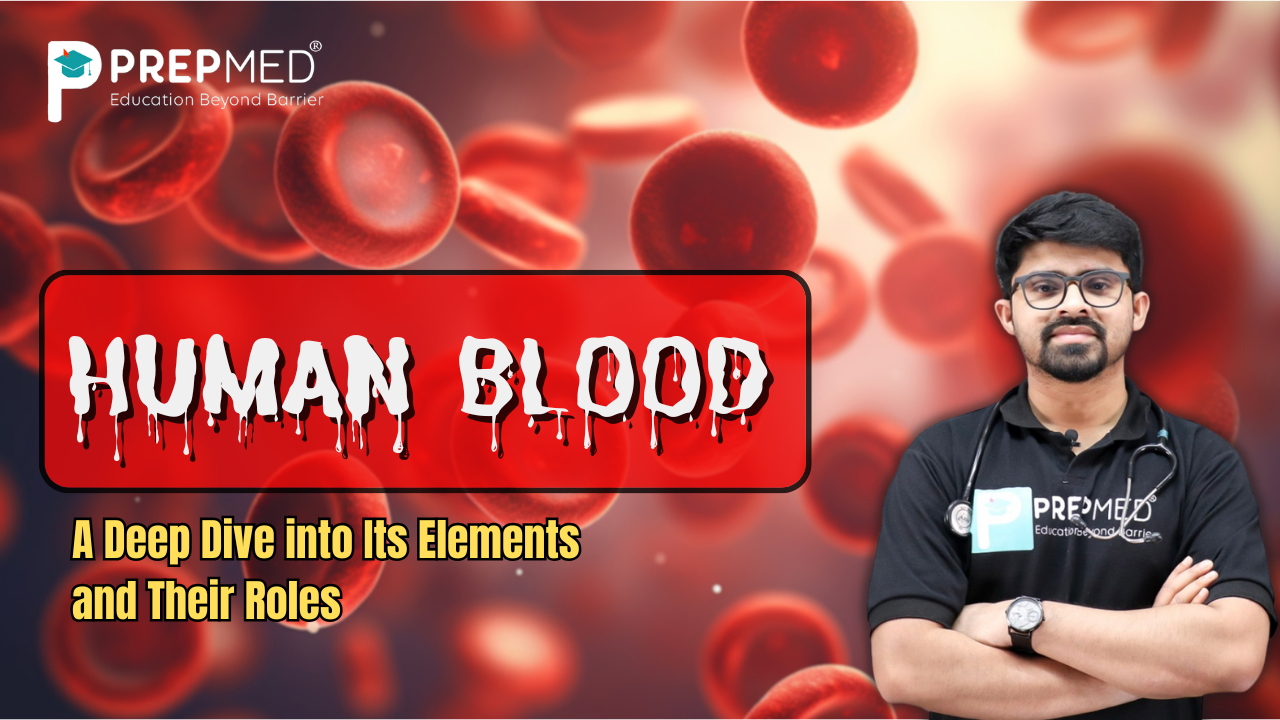January 05, 2025
Human Blood: A Deep Dive into Its Elements and Their Roles
Blood is one of the major fluids in the human circulatory system through which it flows within our blood vessels thereby transporting various useful nutrients throughout your body. Blood comprises of:
- Erythrocytes which are mainly known as red blood cells are responsible for transporting oxygen to several parts of the body.
- Leucocytes( also known as white blood cells) are responsible for fighting infections and providing a defense mechanism to the body.
- Thrombocytes (also known as blood platelets) that are involved in the clotting of blood.
- Blood plasma which is the liquid component of the blood that carries nutrients, hormones, and excretory products.
Blood that flows in the body has a vital role like transportation of oxygen and major nutrients to the cells and other organs, removal of the waste products, regulating the body temperature, and protecting the body to defend against various infections and other diseases.
Blood is pumped by the heart and flows through the arteries, veins, and capillaries, ensuring that all the organs and the cells receive the necessary nutrients, nourishment and oxygen for the vital functioning of the body.
Describe the blood Plasma

Blood plasma is an essential part of blood and is composed of a blood volume of about 55% of the total amount. It is a straw colored and sticky fluid like substance that contains 92-94% water and 6-8% proteins. These plasma proteins include fibrinogen, globulins plasma, and albumin plasma.
- Fibrinogen is involved in clotting the blood in a case where there’s an injury such that it does not continuously bleed.
- Albumins have the function of maintaining osmotic pressure so that water can be properly retained within tissues.
- Globulin are proteins which play an important part in immunity and inflammation as well as in the defense against infections.
- In plasma there are minerals such as sodium, calcium magnesium, and other metal ions together with bicarbonate ions which aid in the regulation of the whole body’s pH as well as other vital roles in transport of nutrients. There are amino acids and glucose in plasma as well, which are important nutrients for the cells in the body.
What do you know about the formed elements?
Erythrocytes, Leukocytes, and blood platelets are the components of the formed elements and compose 45% of the blood.
-
The Erythrocytes or the red blood corpuscles are responsible for the oxygen transport to the various tissues of the body and the removal of excretory wastes from the body. Red blood cells are produced in the bone marrow have a biconcave shape-like structure, and have no nucleus. Erythrocytes are the most abundant type of blood cell in the body, ranging from 5 million to 5.5 million per cubic millimetre of blood.
-
White blood cells or leukocytes are generally colorless as they are devoid of hemoglobin. They have a nucleus and are generally short-lived. Responsible for fighting infections and other foreign particles in the body. They are divided into two main categories: Classification for leukocytes is granulocytes and agranulocytes. The classified granulocytes are neutrophils, eosinophils, and basophils while the other one agranulocytes, comprises lymphocytes and monocytes.
-
Neutrophils are the most abundant white blood cells and basophils are the least.
-
Neutrophils and monocytes are responsible for destroying the foreign particles entering the body.
-
Basophils regulate the inflammatory reactions and secrete histamine, serotonin, heparin, etc.
-
Eosinophils regulate the allergic reactions and resist infections.
-
Lymphocytes have two major types: B and T lymphocytes that are responsible for regulating the immune responses of the body.
Describe the Blood Groups
As you know, the blood of human beings is relatively different in some or other ways though it appears to be similar. Different means of grouping of blood have been done. Two such groupings are– the ABO and Rh – are widely used all over the world.
The ABO Blood Grouping
ABO grouping is dependent on the expression of two surface antigens on the RBCs. They are A and B. Likewise, the plasma of different people consist of two native antibodies which are proteins being formed in response to antigens. The distribution of antigens and antibodies are divided into the four groups of blood namely A, B, AB and O. You might have known that during the blood transfusion process, any blood cannot be used, the blood from a donor has to be well selected.
before any transfusion of blood, with a blood of a recipient to help reduce serious problems of clumping (destruction of RBC).
Rh Grouping
The Rh factor is known as one of the Rhesus factors due to the origins of its discovery in Rhesus monkeys; it is actually an antigen located on the cell membrane of RBCs. Possessors of this antigen are termed Rh-positive while the absent of this antigen is Rh-negative. When an Rh-negative individual is given Rh-positive blood, the blood type in the recipient starts producing antibodies against the Rh antigen, which results in various complications especially when undergoing subsequent donation.
In pregnancy, an Rh-negative mother expecting an Rh-positive baby begins to produce antibodies against the Rh antigen if the blood of mother and child mixes as occurs during childbirth. This may lead to a disease called erythroblastosis fetalis whereby the maternal antibodies combine with the fetus RBC resulting in anemia and jaundice of the newborn baby.
In order to avoid it, Rh-negative women are usually administered with anti-Rh antibodies following the birth of their child who became Rh-positive. This saves on the formation of Rh antibodies and eliminates the risk of future pregnancies complications.
The process of blood coagulation
Coagulation or a formation of a blood clot is usually initiated when there is an injury or harm to the body to ensure limited blood loss. When a person is injured, a clot emerges where the injury occurred and turns reddish-brown in color when healed. This clot, referred to medically as the fibrin clot, is made from a meshwork of fibrins, which are strings formed by a protein called the fibrinogen in the blood plasma.
Fibrinogen is converted into fibrin whenever it is acted upon by the enzyme thrombin, which is at the center of the clot formation. Thrombins are formed from the prothrombins. The platelets liberate some products that contribute to clot formation, and enhance the process. It is also well known that calcium ions are involved in blood clotting and help activate a number of clotting factors. In general, blood clotting plays a critical role in the process of coagulation and tissue repair, and also in avoiding blood loss in the human body.
What is lymph?
When the blood passes into the tissues, not only water but also small molecules of water-soluble substances move out into the spaces in between the tissue cells, thereby leaving behind large protein molecules and most of the formed blood elements in the blood vessels. This fluid is known as the tissue fluid and has the similar composition as the plasma.
The fluid present in the lymphatic system is known as the lymph and is a colorless fluid that has lymphocytes. These are majorly responsible for the immune responses of the body.






